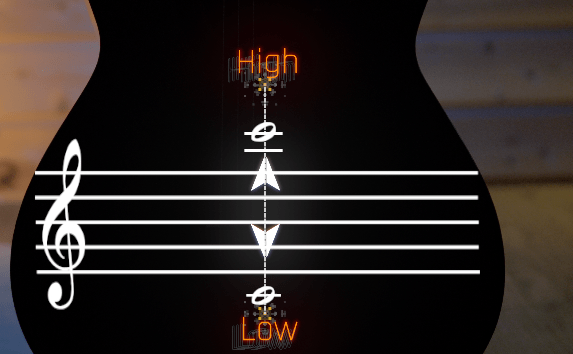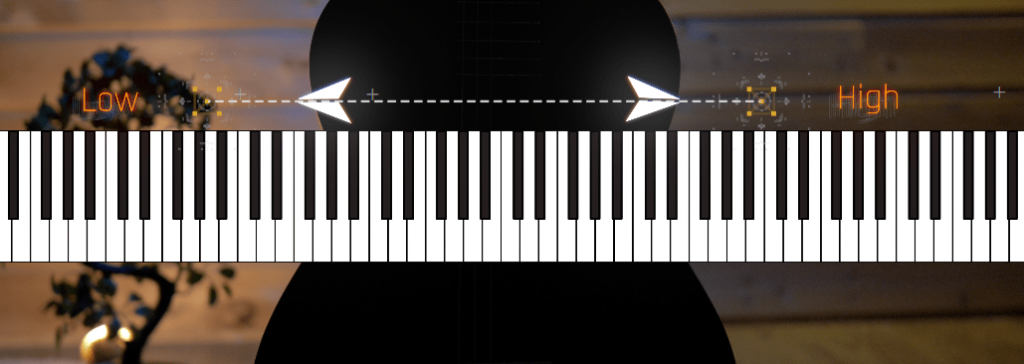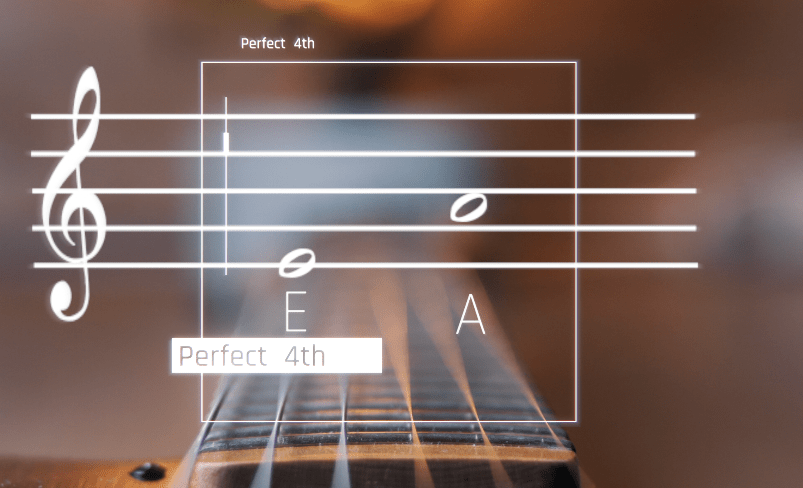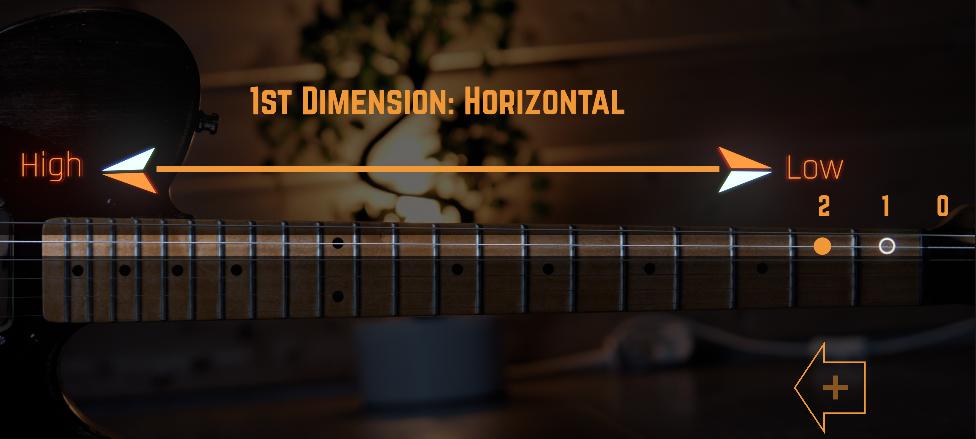Understanding The Complexity Of Learning Guitar
Learning the guitar is insanely complex.
I would even go so far as to say it might be harder to learn than other instruments, due to its unique design features.
So, no matter what type of guitar or music style you play,
But if you find yourself struggling and being confused with understanding the guitar,
maybe even after years of dedication, playing, practicing, and gigging,
Then it’s likely that your struggle is caused by these three design features.
The Three Key Design Features
Over the years, I’ve identified three main design features that make the guitar an insanely complex instrument.
These features often go unnoticed but can cause significant confusion if not understood.
My goal here is to explain these features and give you a big picture overview what you do about it.
But before we start to explore these guitar features, we first need to take a brief look on a how pitch actually works, because it’s the very foundation of every instrument to make music.
The Basics Of Pitch
(Please, bear with me referencing the piano here and there. The piano is often used to explain music, and for a good reason. It will make things easier to understand.)
At its core, music is about changing pitch—a simple concept.
It is linear and one-dimensional: There are just two directions.
Low to high and high to low.
And the smallest step you can take from one note to another is a half step.

The piano keyboard is a perfect representation of this axis. To change the pitch from low to high you move from left to right and vice versa to change the pitch from high to low.
Easy, right?

On a piano, the keyboard is arranged in a single line from left to right, where each key represents a half step.
For example, moving from one white key to the adjacent black key or from one white key to another (where there is no black key between) is a half step.

This clear, linear progression makes understanding scales and intervals relatively intuitive.
However, on guitar it’s unfortunately not that easy….
It’s two-dimensional.

The 2nd Design Feature: Invisible Pitch Distances
On the guitar, however, pitch changes can occur both horizontally (along the fretboard) and vertically (across the strings).
Each fret on the guitar represents a half step, similar to the piano’s keys.
But moving from one string to another introduces a second dimension, adding multiple layers of complexity as we will explore.
Unlike the 1st dimension (horizontal), where you clearly see the distance when moving from one fret to another, the 2nd dimension (vertical) features invisible pitch distances when moving between strings.
In terms of pitch there are no visual indications when moving from one string to another. The standard tuning goes like this: EADGBE

So the distance from one string to another in terms of pitch distances is (from low E-string to high E-string)
Low E to A = Perfect 4th
A to D = Perfect 4th
D to G = Perfect 4th
G to B = Major Third
B to E = Perfect 4th
Notice that a perfect fourth is 5 half steps wide, but the physical distance from one string to another is comparatively small!

Compare this to written music. A perfect fourth is a significant jump because you skip four notes. (From E to A, you go from E to F, G, and then A.)

In fact, you don’t even have to play in standard tuning. Guitars are sometimes tuned completely different. Which makes the learning and grasping way more difficult, just in case you play with different tunings…
The 3rd Design Feature: Irregular Tuning Structure
Notice that the vertical dimension has a another layer of complexity.
It is irregular.
While the majority of the strings are tuned in perfect fourths, the G to B string interval is a major third.

This irregular tuning disrupts the otherwise consistent pattern and can be a source of confusion when learning chords, scales, and other musical concepts.
For example, playing a C major chord across different strings and positions can result in different fingerings and shapes.
This irregularity means that a guitarist must learn multiple shapes and fingerings for the same musical idea, which can be daunting for beginners and even intermediate players.
The Practical Consequences: Why Learning Guitar Is Hard
So, now that you know the three main design features that are causing complexity and confusion, let’s take a look on some practical consequences of this.
Misalignment Of Pitch Distances And Physical Movements:
On the piano, moving from one note to the next in a scale or interval involves a straightforward left-to-right or right-to-left motion.
If you play from A to B on the piano it looks like this:

Easy and straight forward: You just go from left to right. It’s not possible any other way…
But on guitar…yeah, let’s put it this way – we have some options…
The first one would be this: Just play the open A string and go from the open A String to the 2nd fret the same string. This way you only have utilized the horizontal dimension. So it’s straight forward like on the piano…

But you can play it differently and even in the opposite direction if you utilize the vertical dimension.
If you start playing the A on the 5th fret of the low E string, it is possible to play the B on the A string at the 2nd fret.

Notice that you are now moving in the opposite direction. In the first example, you played the open A string and then moved your finger to the second fret. So, you moved your fingers from the lower fret to the higher frets.
Now, in this example, you are moving your fingers from the higher frets towards the lower frets!
This is only possible because you are using the vertical dimension. Otherwise, it wouldn’t be possible.
And another anomaly here is this: while in the first example there was only one fret between the A and the B, in the second example, you have a completely different shape with two frets in between and a string jump for the same interval.
Even a 3rd way is possible on the low string from the 5th to the 7th fret…
so three ways to play one and the same interval in opposite directions and different finger positions.
Challenges With Music Theory Concepts
I hope that by now you can imagine how these design features make the entire field of music theory harder to grasp for us guitar players
So even a simple concept like intervals can be covered under a layer complexity be cause of these features.
So, now just imagine how other simple concepts like scales or triads are translated on the guitar….
The entire topic of music theory, which is linear and straightforward in theory, becomes complex when applied to the guitar.
For example, the major scale, with its simple and linear pattern, becomes multi-dimensional on the guitar, where each note can be played in several positions. This complexity can really obscure the underlying simplicity of the scale and make learning really confusing.

How To Practice For Better Understanding
Given these challenges, how can you effectively learn and understand the guitar?
Be aware of both dimensions. Try to see the simple and linear structure of a music theory concept before it get’s complex because of the guitar. To do this I recommend you these strategies:
Practice in Both Dimensions: Make sure to practice intervals, scales, and triads both horizontally (along the fretboard) and vertically (across the strings). This will help you become familiar with the guitar’s layout and the various ways to play the same musical ideas.
Break Down Practice into Small Chunks: Instead of trying to learn entire scales or pieces at once, break them down into smaller, manageable parts. For example, focus on playing scales within a single octave before expanding to larger sections of the fretboard. This approach really helps reinforce your understanding of the guitar’s layout and builds your confidence, because you then will be able to connect smaller chunks into lager scale runs.
Learn in All Keys: Practice scales, intervals, and triads in all keys, working through the circle of fifths. Please don’t shy from this!!! This approach will definitely demystify many aspects of music theory. It is really worth to play some exercises a few times through all keys.
Upcoming Content: Stay Tuned for More!
This post is just the beginning. I’ll be following up with a series of videos and blog posts featuring exercises designed to help you master these concepts.
These exercises will be structured in a way that’s easy to follow, ensuring that whether you’re a beginner or more advanced, you can benefit from them. Make sure to check back regularly for new content and updates!
Conclusion: Embrace the Complexity
So, Now that you know how complex learning the guitar is, I hope you are not discouraged.
But, If you feel overwhelmed or haven’t fully grasped what I’ve talked about, that’s totally fine. It’s okay to be confused by this complex design. Here is what you can do about this:
I encourage you to read this post or watch this video again AFTER you go through the upcoming exercises that I will show you, because then you will gain the experience necessary to understand these concepts better.
One of the biggest takeaways is this: Relax.
It takes time.
This understanding is not something you can gain and grasp in a few days.
It is certain that confusion and overwhelm will be a major part of the journey, but that’s fine. It’s simply the way it is. So it’s not you being stupid it’s the guitar being complex. And you have to simply put in the hours.
So, to sum it up, relax. It is complicated, and in a way, we guitarists are a little handicapped by the design of the guitar. But let’s not complain too much about this…
Remember, It’s not the music that’s hard. What’s hard is grasping music through the guitar.
Have fun and stay tuned!

